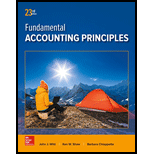
Concept explainers
1)
Introduction:
Cost allocation of
• Cost allocation of Overheads takes place on basis of cost objects identified to enable cost allocation. Overheads refer to costs of operations and comprise of indirect costs in the form of selling and administrative expenses.
• Examples of Overheads are Salaries of administrative staff, rent of office, advertising expenses etc. The costs of the operations are allocated on basis of cost objects. Cost objects are units of cost allocation identified for overhead allocations and cost estimations.
• Examples of Cost objects for Overhead allocation are Number of units produced, number of labor hours worked etc.
To Determine:
Average Cost per patient
2)
Introduction:
Activity Based Costing
• Activity Based Costing is a method of cost allocation, whereby costs are assigned to activities performed and cost per unit of activity driver is calculated and assigned to units of activities performed.
• Activity drivers could be cost allocation units such as orders, batches, area occupied etc. Activity based costing favors cost allocation on the actual units of activity carried out as opposed to the standard method of overhead application using a blanket rate.
To Determine:
Overhead activity rate for each activity
3)
Introduction:
Activity Based Costing
• Activity Based Costing is a method of cost allocation, whereby costs are assigned to activities performed and cost per unit of activity driver is calculated and assigned to units of activities performed.
• Activity drivers could be cost allocation units such as orders, batches, area occupied etc. Activity based costing favors cost allocation on the actual units of activity carried out as opposed to the standard method of overhead application using a blanket rate.
To Determine:
Allocate Costs to General Surgery and Calculate cost per patient
Want to see the full answer?
Check out a sample textbook solution
Chapter C Solutions
Fundamental Accounting Principles
- Carrington Trading is a merchandising company. Last month, the company's cost of goods sold was $72,800. The company's beginning merchandise inventory was $24,500, and its ending merchandise inventory was $21,300. What was the total amount of the company's merchandise purchases for the month?arrow_forwardPlease provide the answer to this general accounting question using the right approach.arrow_forwardDescribe how inventory is valued under FIFO and LIFO methods.arrow_forward
- Die Industries began operations on March 1 with cash of $150,000. All of March's $240,000 sales were on account. During March, no customer collections occurred. The cost of goods sold was $95,000, and there were no ending inventories or accounts payable. Use this information to determine the ending balance of cash on hand for March.arrow_forwardWhat is Redmont enterprise total equity ?arrow_forwardI am searching for the most suitable approach to this financial accounting problem with valid standards.arrow_forward

 AccountingAccountingISBN:9781337272094Author:WARREN, Carl S., Reeve, James M., Duchac, Jonathan E.Publisher:Cengage Learning,
AccountingAccountingISBN:9781337272094Author:WARREN, Carl S., Reeve, James M., Duchac, Jonathan E.Publisher:Cengage Learning, Accounting Information SystemsAccountingISBN:9781337619202Author:Hall, James A.Publisher:Cengage Learning,
Accounting Information SystemsAccountingISBN:9781337619202Author:Hall, James A.Publisher:Cengage Learning, Horngren's Cost Accounting: A Managerial Emphasis...AccountingISBN:9780134475585Author:Srikant M. Datar, Madhav V. RajanPublisher:PEARSON
Horngren's Cost Accounting: A Managerial Emphasis...AccountingISBN:9780134475585Author:Srikant M. Datar, Madhav V. RajanPublisher:PEARSON Intermediate AccountingAccountingISBN:9781259722660Author:J. David Spiceland, Mark W. Nelson, Wayne M ThomasPublisher:McGraw-Hill Education
Intermediate AccountingAccountingISBN:9781259722660Author:J. David Spiceland, Mark W. Nelson, Wayne M ThomasPublisher:McGraw-Hill Education Financial and Managerial AccountingAccountingISBN:9781259726705Author:John J Wild, Ken W. Shaw, Barbara Chiappetta Fundamental Accounting PrinciplesPublisher:McGraw-Hill Education
Financial and Managerial AccountingAccountingISBN:9781259726705Author:John J Wild, Ken W. Shaw, Barbara Chiappetta Fundamental Accounting PrinciplesPublisher:McGraw-Hill Education





